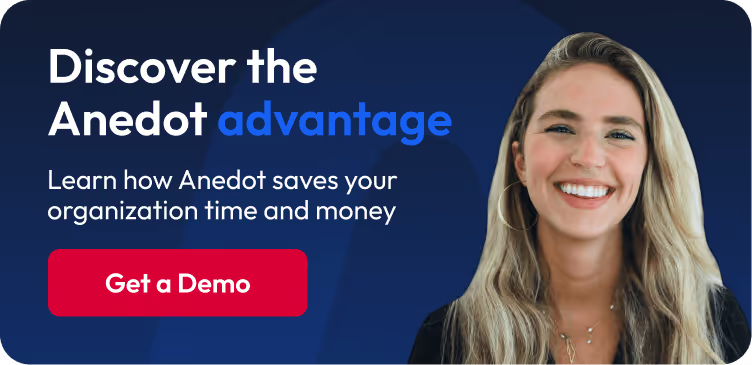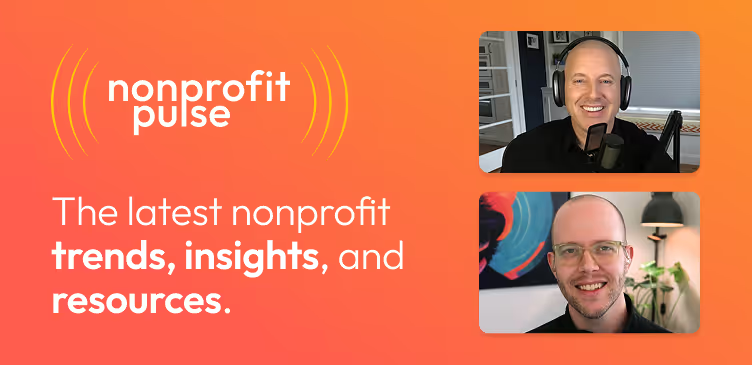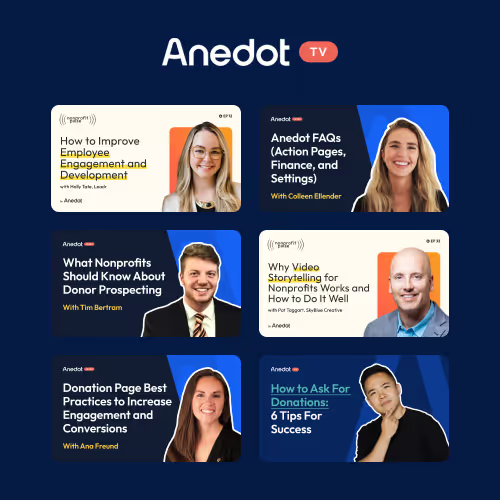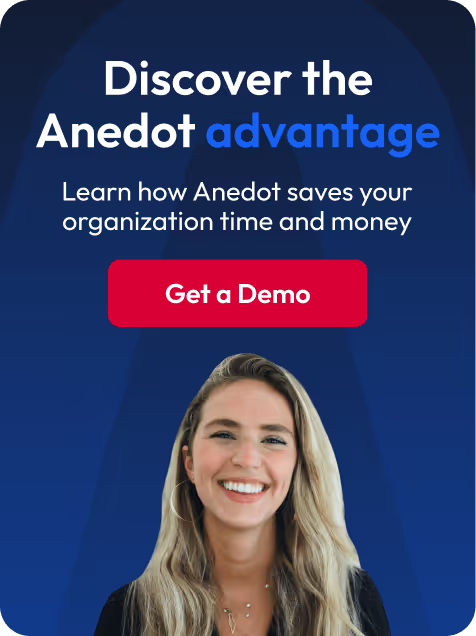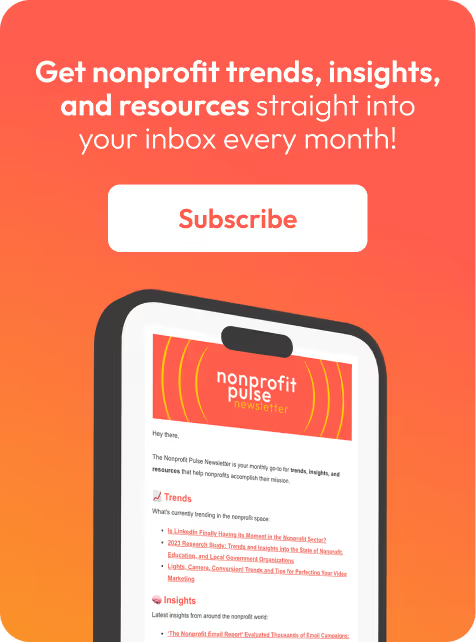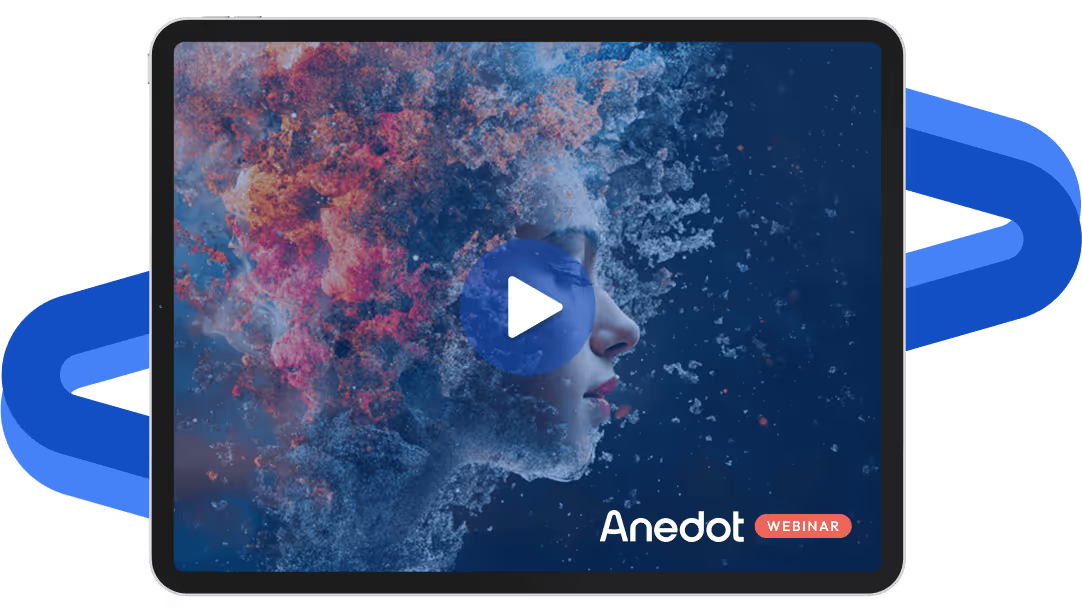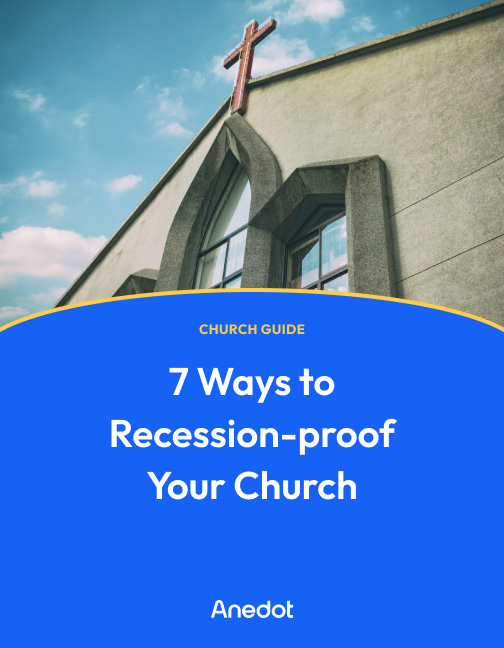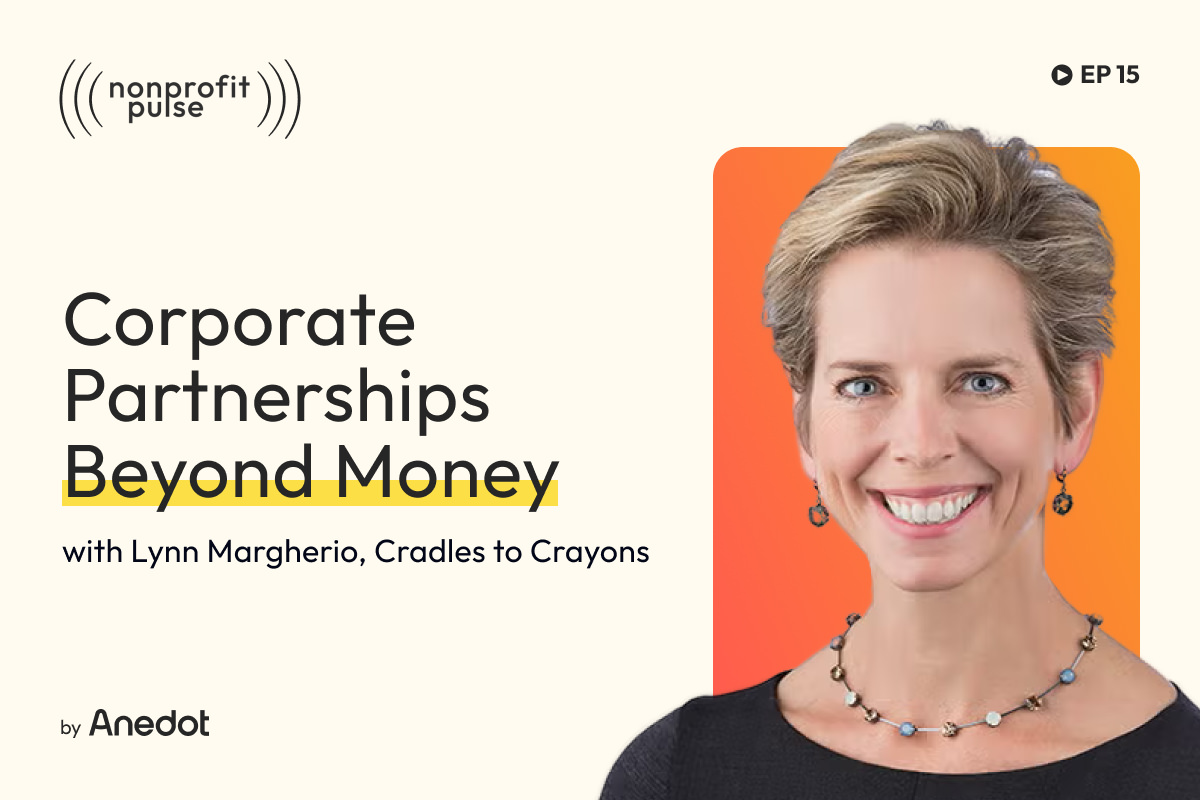Podcast episode transcript ↓
Josh:
Nonprofit events can inspire action, strengthen communities, and bring your mission to life like nothing else.
When planned with purpose, every decision, from setting objectives to creating engaging experiences, can energize supporters and turn attendees into long-term advocates.
But how can nonprofits design events that truly engage and empower supporters? What strategies make experiences both memorable and meaningful?
And how can organizations ensure every event drives lasting impact for their cause?
I’m Josh with Anedot, and welcome to Nonprofit Pulse, where we explore trends, insights, and resources that help nonprofits accomplish their mission.
On this episode, we’re joined by Karen Alonso on how to plan events that drive engagement and empower your supporters.
Karen is the Chief Advancement and Communications Officer at United Way of Southern Nevada, where she leads fundraising and marketing efforts to advance the organization’s mission.
She has led multi-channel campaigns that raised millions for national nonprofits, including the International Rescue Committee and Special Olympics International.
Karen serves as the President of the Association of Fundraising Professionals, Las Vegas Chapter, and previously led the American Marketing Association, Las Vegas Chapter.
She also contributes to the Las Vegas Global Economic Alliance Branding Council and the UNLV Marketing and International Business Community Advisory Board.
Hey, Karen, thanks for joining us on Nonprofit Pulse.
Karen:
Hi, Josh. Thanks for having me today.
Nonprofit event planning tips to align your events with your mission and engage your community
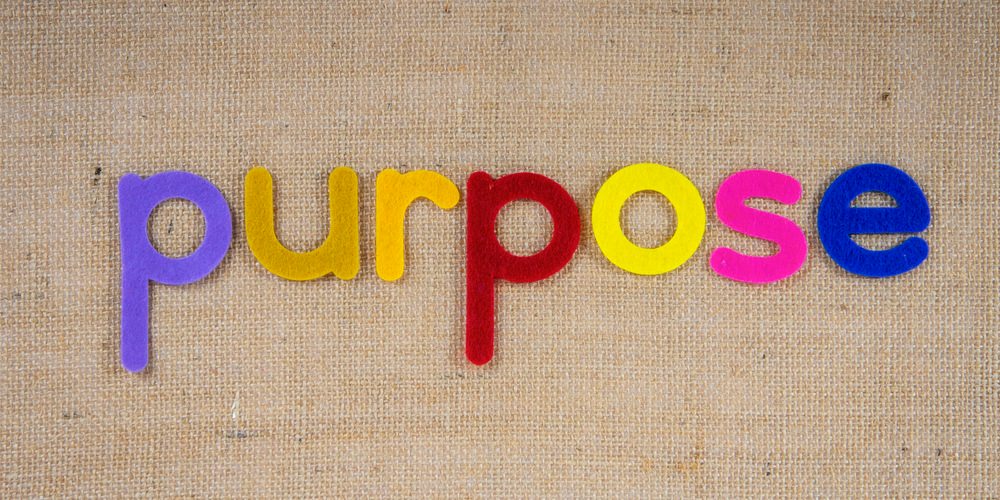
Josh:
Yeah, excited to talk about our topic today, which is how to plan events that drive engagement and empower supporters. Such a great topic.
And we have a lot of listeners that either aren't doing events and want to start, or maybe they've been doing events, but they're not as effective as they could be.
So excited for our conversation today.
So maybe just starting off, what should nonprofits consider first when planning an event to really make sure it aligns with their mission but also engages their community?
Karen:
I think there's a lot of things that you have to think about when diving into event planning.
First and foremost, what is the purpose of the event? And is it a fundraising event? Is it to bring community together? Is it to advocate for a cause or a program? Is it to educate?
And I truly believe that it's rare for an event to be a singular focus.
I think there's so much overlap so often in events as there should be, right?
Because it could be a fundraising event. But now you're trying to gain these supporters, and you want these people to become your ambassadors and advocate for the cause.
So I really don't believe there's a singular focus, but you have to figure out what's the purpose.
And from there, really dive into the strategy behind it. What's the objective? How can we strategically meet that objective?
And a lot of that is also knowing your audience. I know we say this in all avenues of marketing, events are no different. Who is the audience that you're engaging at this event?
So making sure that what you're planning, what you're doing, the initiatives are speaking to them.
Josh:
Yeah, and thinking about those objectives, how would you guide organizations to define those objectives?
Whether it's fundraising, community building, advocacy, how do these objectives really influence that event design?
Karen:
Sure. So if you're just looking to engage community, I'm going to use the United Way of Southern Nevada because that's what I know best.
We do two community focused events.
One of them is a trunk or treat, where we just want to be there for the community, provide a safe and fun atmosphere for kids to have a good time for Halloween.
So we're not trying to make money off of that. It's community focused. However, we do want people. There's also a brand awareness that comes with that. So again it's multifaceted, right.
So while we're just engaging in community, we're getting the United Way name out there. We're telling them how we show up.
Another community focused event that we have is Fall Day of Caring. Day of Caring is just simply bringing volunteers together.
This year, it's happening actually in two weeks from now, and we have over a thousand volunteers getting together on one day. Everybody signs up for volunteer projects.
Again, this is strictly community minded. We're getting together, we're giving back, we're focused on volunteerism.
But it's also this is how United Way shows up for the community.
If it's a fundraising event, making sure that you're creating an experience that's memorable, that's educational, that's making people really feel inspired by connecting the people with the mission, making sure that they're inspired by the stories that they're hearing.
And when you're being strategic and you're wanting your objectives to be met, when you're having events like that, that are fundraising focused, there's education involved in it.
When you have speakers, are these speakers going to relate to the people that are in the room? If we have honorees, are they going to be inspiring the people that are in the room?
One example that comes to mind is United Way has an affinity group called Women United. It's female philanthropists. And our biggest fundraising event every year is a fashion show luncheon.
So this past year we had phenomenal speakers, phenomenal honorees, and there is one woman who was in the audience who said to me afterwards, she said, Karen, I want to be on stage someday and I want to be getting that award.
So just from hearing those stories, she was instantly inspired and wanting to get more involved. So I think you just really have to know the audience and be strategic in what the running show looks like, how you're engaging the people in the room.
You want it to be entertaining. You want it to be educational. You want to inspire people to want to support financially and then remain involved after the event.
But you also want to make sure that they're leaving understanding what you're truly doing as an organization.
Josh:
I love that, and I want to dive deeper on that supporter involvement before and after the event.
But before we get to that, how often do y'all address or kind of plan your event design work? Is that every quarter, every year? Directly after an event?
Do you do kind of an after action report and address any changes that may need to happen?
What does that look like for you all at United Way?
Karen:
We do so many events. I feel like there's no event season. The whole year is event season here, so we're constantly planning for the next one.
But you just mentioned something really important. It's having those debrief conversations afterwards with the staff that was there.
I'm big on getting committees together for Women United events. I want our members to be part of it, helping to plan it, helping to develop the running show.
They’re our audience, right? So we want to provide an experience that speaks to them, but getting their feedback, not just in the beginning and throughout the planning process afterwards.
What was good? What was wrong? What could we have done differently?
So we're always just trying to make each event bigger and better the following year from learning what happened the previous year.
Engage supporters before and during your nonprofit events

Josh:
So diving back into the supporter involvement with events, what are some effective ways for our listeners of how to involve supporters before, during, and after an event to really deepen their connection to your cause and your mission?
And you've mentioned some of that before, but maybe could you share some more or deeper insights around that?
Karen:
Yeah, I love this question because I think there's so many things that you can be doing before, during, and after to make sure people are involved.
So first and foremost, like I said, get a committee together.
Whether it's donors, members of an affinity group who are brand new, who are seasoned, you want all different perspectives, but you want these people to have buy-in into what you're trying to accomplish.
As soon as you have the date, I don't care if it's six months in advance, nine months in advance.
Send out a save the date to all of your constituents because you want to make sure it's on their calendars early, right?
But beyond just getting it on your constituent’s calendars, you want to get it on community calendars as well.
So a lot of PR firms in other cities, they might have just one centralized community calendar where all different nonprofits can submit their events. But that's so important and oftentimes forgot.
You don't want another nonprofit to have a fundraising gala the same exact night as yours.
Last year, for our golf tournament, United Way got our date very early on the community calendar.
And unfortunately, we still had another nonprofit doing their golf tournament the same exact day, which of course creates, I don't want to say competition, but now a lot of our donors are the same. They have to make their choice.
A lot of our sponsors are the same, they have to make a choice. So really getting on those calendars as soon as possible, I think, is imperative to make sure that your event is the only one that day.
If other cities are anything like Vegas, there's always something going on, whether it's a nonprofit event or just something else going on in town. So getting on as early as possible, I think is really important.
So once you have your save the date announced, as you're booking speakers, booking honorees, you've got your emcee, while you're planning and this is coming to fruition, you want to make sure that you're announcing that as well, that you didn't just send the save the day.
And as soon as tickets go on sale, this is the next they're hearing of it. Keep them involved every step of the way, so they're getting excited, they're not forgetting about it.
I talked about the committees. Keep saying how important that is. And then, a lot of times we're partnering with advertising companies, getting in-kind billboards, in-kind radio spots.
So any time you've got an advertising partner, hopefully you're getting it in-kind. But if you're not, then you’re paying for it. Just let them know that's the relationship that you're building as well.
Let them know. Hey, I just heard my radio spot. Thank you so much for supporting us.
Or every time I see one of our billboards on the highway, I'm so excited. I can't snap a picture, but I'll send an email to the agency saying like, just saw our billboard out in the wild. Thank you so much for what you do.
So I think all of those are really key aspects leading up to the event. During there's so many ways that you could be engaging the attendees that are there.
So, some examples that United Way does in terms of activations. We have for our Women United group that I mentioned before, we're providing scholarships for girls through the money raised through Women United.
We provide scholarships for girls that stay with them all four years, that they're enrolled in the Southern Nevada college or university.
So at Women United Events, we're having women write them note cards. Words of wisdom, words of encouragement, letting them know this is tough, you’ve got so much going on, but you've got this.
We're all here for you, right? So it's connecting our audience with the actual girls that are being served by us.
And, some other examples, acknowledging sponsors. A lot of times one of the sponsorship benefits is that you're going to acknowledge your sponsor by name from stage, right.
But taking it a step further and using the names of the people from that company that are there.
So, thank you to whatever corporation and the key individuals that you're working with, Tracy, Jolcy. Like whoever's at that table, who you recognize, it's such a small but special touch for those women.
And again, I'm using women because I'm thinking Women United. But for those individuals to get that little bit of recognition, it kind of makes their heads turn really quick because they just heard their name.
Other ways to engage people.
So let's say this is an event that has been going on for years, and you've got somebody who was on the original planning committee, or if it's an affinity group or a membership group, you have somebody who is the original chair.
This past event that we did at United Way, we had somebody we acknowledge the founding chair of Women United, and we had somebody bring her a bouquet of flowers who was completely surprised.
But it's all of those very special touches that create a lasting effect, not just with the person who got the bouquet of flowers, but everybody who is around her saying, what a nice touch that was.
We always assign staff as floaters in the room, making sure they're having the connections. They're getting the face time with these women.
Oh. Have you ever been to this event before? Why are you supporting, what draws you to this event or the mission of United Way?
Having those conversations to make sure that everybody feels special and part of it and included. And then, the last idea that I'll give is calling out people who've been involved for milestone years.
Have you been a member or have you been a volunteer? Five years? Raise your hand or stand up. Ten years? Stand up. 15 years? It gives everybody that special moment that most of us really love.
Add interactive experiences to boost engagement at your fundraising and nonprofit events
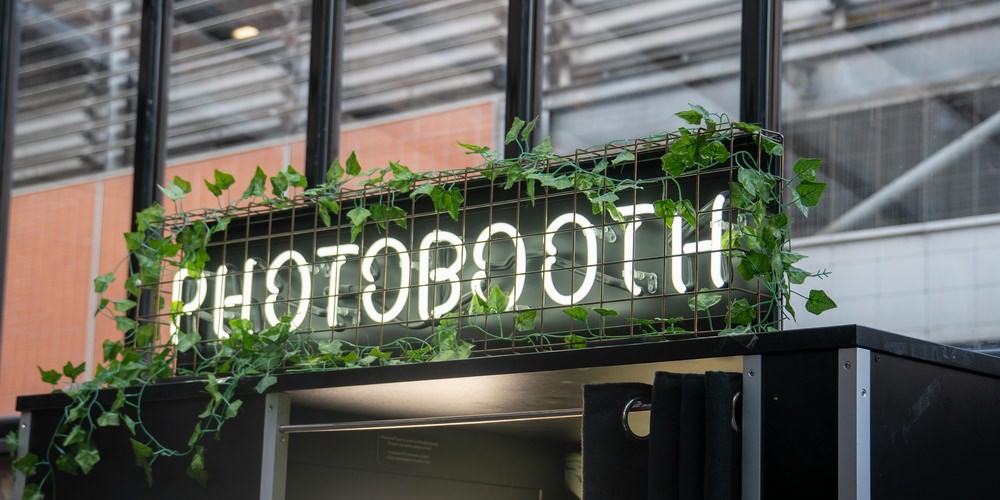
Josh:
I love that, I love that so much.
And, even just thinking for the corporate sponsor side, there's people who have been that bridge between the organization and the corporation who may have been doing this for a number of years and have not been recognized at all inside of the business side and potentially even on the nonprofit side, because nonprofits view them as, oh, that's XYZ company, not that's Sherry or Bill.
And so I love that idea, of just making it more human and just more personable overall.
So, Karen, you are in Las Vegas, which is an incredible place for events. And especially like, I think interactive events or events that are interesting.
I wonder if you could share some examples of interactive elements or experiences that have really successfully boosted attendee engagement at nonprofit events?
Karen:
Yeah, I think one of the first ideas that comes to mind is during a fund a need or raise a paddle, United Way gives something special to every single person who raises their paddle.
It doesn't matter if it's for $10,000 or $150, everybody's recognized.
So at one of the events that we did, everybody got a rose. So that's a great interactive element to make people want to give.
And then we do other special things where if an entire table raises their paddle during a fund a need, they get a special surprise.
They get a bottle of champagne that they can all cheers and celebrate their success together. So those are some fun, interactive ways to get them involved.
Other activations that we've had. Everybody loves a photo experience.
So we did at our last event. We did it and it was a lot of fun. We did a AI generated photo booth, and all of the people who took a photo were turned into a superhero. That was a great time.
And you could either just do, like all photo booths, you can have the digital photo sent via text, which is great because it's immediately shared on social media and then people are tagging the event.
So you always want that. But then to have a printed keepsake I think is really important as well. So the AI photo booth.
We partner with a photographer who creates, they’re very brief, but he creates these one on one experiences with our event attendees where he'll essentially, for women, do glamor shots or for couples like really upscale elevated, like they’re mini photo sessions.
And people love it. And what I love, we've used this photographer for two years in a row where he's doing these personal experiences, and they're quick, but it's not just hop in front of the camera, take a photo and walk away. Like he'll spend a few minutes with you.
After the events, to this day, I see people's Facebook pictures, their Instagram profile pictures like their cover photos, they're from our events. They're from that personal photo experience.
So you can't go wrong with photos. I feel like even if you have a bunch of different photo stations, everybody loves it.
We use a DJ at some of our events where it's appropriate, and having a DJ always gets people involved. It keeps the hype up.
And, at one of our events, Day of Caring, that I mentioned, which is volunteer focused, we have a kickoff celebration in the morning with the DJ there.
So that's early in the morning. He's getting everybody hyped up. And, he had everybody do the Cupid Shuffle right before they dispersed to do their volunteer projects.
So I think that's a great way to get people energized and engaged of course, you've got your traditional things live auction, silent auction, raffles, contests, the fund a need, which I talked about.
And then the last thing, unique idea that we did recently was a caricature artist. So that was really fun too.
And it's giving people these keepsakes, which again, just like the photos they're taking pictures of your caricatures, sharing it on social media.
It's creating a buzz that we don't even have to create as an organization, just them getting these keepsakes, they're posting about it online.
Turn event attendees into long-term supporters, volunteers, and advocates for your mission
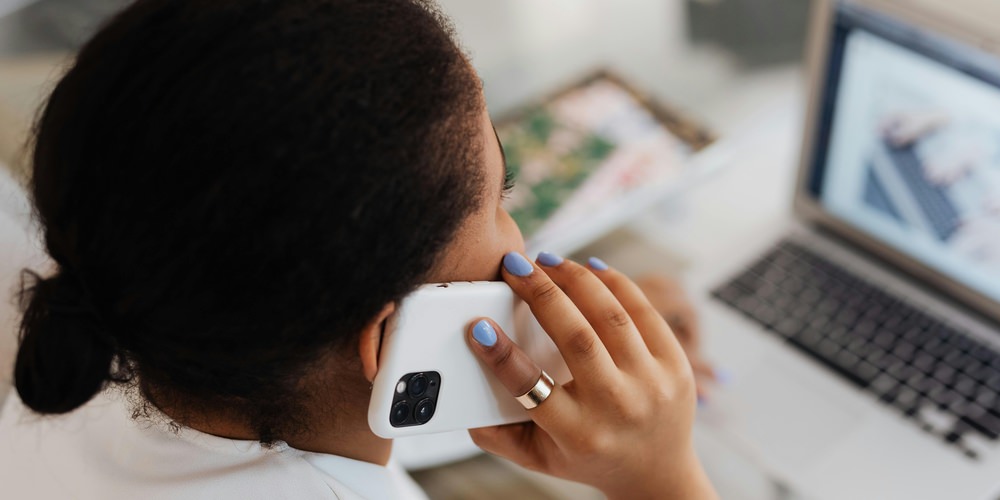
Josh:
Yeah, I love how your organization gets to age with that photo that in five years from now, when they look back to that, they say, oh, that's when we were at the United Way event, and that was such a good time.
I wonder if they're having it again this year. We should look and see, getting to kind of have that long term association with that one time is really helpful.
Okay, so Karen, thinking about turning event attendees into more long term supporters.
I'm sure there are many listeners who say, yeah, getting people to the event is one thing, but really getting them to take a next step, whether that's a first time donation, whether that's a first time volunteer, or even finding new board members or people who are maybe are on a path to becoming a board member.
What would you share their audience around turning those attendees into those long term advocates or volunteers for the mission?
Karen:
Josh, that's key. That's absolutely key.
That's why we're having these events. We want to make sure that people are coming. They're having a great experience, but we want them to stay involved once the event is over.
So one thing that I am very big on, and once the event ends, the work is not over. You're just as busy the week after the event as you were leading up to it.
So I am a very strong believer in thank you calls to every single attendee within 48 hours of that event being over. And that takes a lot of work.
We purposely capture cell phone numbers as people are checking in, we tell them that we want to make sure they're getting notifications of when the silent auction is ending, we want to make sure that we can text them a link to the photo gallery afterwards.
So we're incentivizing them to provide their cell phone number. But we can now also call them afterwards and say, thank you so much for being there.
There's no ask involved. It's a simple thank you for being there, we appreciate your presence.
What did you think of the event? What did you love? What do you think we can do differently next year?
So many people appreciate their that phone call, and then they're kind of sitting there in silence, like waiting for that ask to come, that fundraising ask to come. That's not the purpose of it.
It's just really to say thank you in a very timely manner. So I am a huge believer.
People appreciate you picking up the phone, and you're going to leave a lot of voicemails. That's very beneficial as well. It's just letting them know you're thinking of them.
Beyond the event, I also think a very nice touch and all of this is a time consuming effort.
But as soon as we get the photos back from our photographers, we go through them as a staff and we pick out the people that we know, the attendees that we know, and we'll take one photo that's a really good photo of that person.
And we'll send an email and say, love this picture of you. Sneak peek of the gallery that's to come. Again, super time consuming.
We're not going to know every single attendee that was there, but if you could do it for a majority, they got the thank you call, they got that special photo. Great touch points. And very, very, very personal touch points.
Beyond that, sharing more events with them, sharing volunteer opportunities with them. So not everything is going to be an event where you have to purchase a ticket. There's a financial aspect involved.
Just let them know, hey, we're volunteering, come join us. And I think it's also so important to share the impact with them.
If it was a fundraising event and you brought in all this money, afterwards, letting them know this is what your support helped, this is the impact that we meet, thanks to you being at that event.
So I think a lot of times that is missed as well. Some nonprofits and maybe it's a capacity issue, but it's not everybody has a large team, but they have the event and the attendees don't hear from them until the next year when the event is coming back. And that's a huge misstep I think.
One other idea that I think is kind of out of the box from a marketing perspective is taking the attendees that came to the event, having their email addresses and uploading that into Meta, and making sure that they're getting targeted ads for your organization so that you're staying in front of them beyond that event.
So whether you're promoting a program or you're promoting an impact that you made, they're staying engaged with you and they're not even having to do anything to see those ads. It's just very strategic, targeted marketing.
Use storytelling to connect attendees with your nonprofit’s programs and impact

Josh:
I love that, I love that, and especially, using those ads to help them take a next step, right?
To sign up for a list or to check out programs in their area, all those different opportunities for them to kind of move along that value ladder, so to speak, with the organization.
So I want to drill down on the storytelling piece.
You just alluded to it a bit of sharing impact, but really, what role can storytelling play in empowering attendees at an event, to really connect with the organization, to see the vision, to feel empowered and how do you do it well?
Karen:
Stories are the bread and butter of connecting people to the mission. You've got them in the room, now connect them to the mission.
Storytelling is absolutely everything, not just at an event, but for nonprofit marketing in general. People don't remember numbers, goes right over their heads. Numbers don't mean anything. The facts, the figures, it doesn't matter. They remember the stories. They remember the human. They remember the impact.
One example that I have, personal example, my husband is the board chair for the Salvation Army here in Southern Nevada.
And trust me when I tell you, I hear all about the Salvation Army and the programs and the number of people, and it's all amazing work, amazing work that they're doing.
I went to one of their events and they had the emcee, who was phenomenal. He was somebody who had gone through their program and hearing his personal story from addiction and homelessness.
And now here he is, this incredible emcee at this event, telling his journey through their program. I mean, that spoke to me in such a way.
And I learned so many new things, which I thought I knew everything about the Salvation Army. I sure as heck didn't. So those stories mean everything.
I do want to say, a lot of times, nonprofits want to put a program participant, somebody who is touched by your mission, by your cause, they want to put that person on stage.
Not everybody's a public speaker. So I think if you can get a video testimonial that you play, or if you know for a fact that this person is going to tell a great story, that they'll be animated and not very nervous, then put them on stage.
But I do think like make sure you know who you're working with. So it lands because, again, these stories are so important.
I think one thing that United Way did that was really out of the box in terms of storytelling is it was at one of our galas and it wasn't a video, it wasn't a program participant.
We had an actor, former very famous actor, and we did a monologue, but we shut off all the lights in the room.
We had a spotlight over him, and he told the stories of two people that we served through programs, and it allowed us as the audience to picture who those program participants are.
Basically, create this movie in our minds based on the words that he was saying. When I tell you there were tears, you could hear a pin drop.
I mean, it was just dead silence because it was a very dramatic moment too, complete darkness with a spotlight so you couldn't see his face. You're just imagining what was happening.
That was an incredible and a unique way to tell these stories.
Josh:
I love that, and I appreciate your reminder around make sure that the person speaking that it will land, and kind of that warning.
But I think too conversely is make sure you're not only doing video testimonials and stories.
Don't go so risk averse that you say, actually, let's just do all videos, let's get 5 or 6 and we'll play them, sprinkle them throughout because you miss those moments.
Like what you just mentioned, the real human moment where there is a spotlight on someone who can really, kind of give that emotional weight of their story in that moment. That's so powerful.
And people will remember that for years. And as we're talking about on this episode about driving engagement and empowering supporters, those are the magic moments that really take people to the next step and say, lean over to their spouse and say, hey, honey, I want to get involved with this.
Or when they're driving home after the event, I can't believe what this organization is doing and how it's helping people. I want to get involved.
Karen:
Yeah, that's a great point.
And if you do have somebody give a video testimonial, also having them there in the room, so if they're not necessarily speaking, they can still stand up and be acknowledged. It's getting that face time.
One thing that United Way does through our Women United affinity group, we do a suit drive, which is a business attire collection, and we give these clothes that we collect to women who are in return to work programs.
So this year, we're not only going to have a video testimonial of some of the women who received the clothing, hearing about how it transformed their lives, how they were able to go into a job interview feeling confident in their new suit.
It's a fashion show luncheon. We're also going to have them walk the runway.
So you're seeing this video, you're seeing this woman, and next thing you know, she's on stage walking that catwalk. And I think that's so powerful.
Connecting the person, the mission and the work truly live in action.
Measure nonprofit event success beyond attendance and donations
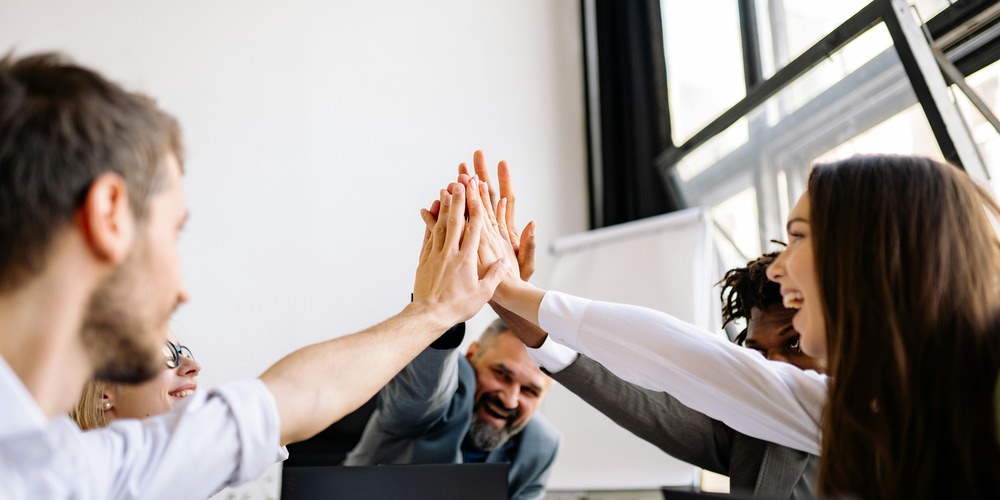
Josh:
That's awesome. That's awesome.
So, Karen, thinking about measuring success for events. And there's a lot to measure. There's a lot to not measure.
And, we talked about vanity metrics and numbers that don't matter.
But really, from your perspective, how should nonprofits measure the success of an event beyond just dollars raised or attendance numbers?
Karen:
Yeah. Beyond the almighty dollar. I think, like I was saying before, the buzz on social media, how many people are there posting live during the event, sharing the photos?
I've got to tell you, it creates such a buzz and it creates this fear of I’m missing out on something big from people who couldn't attend.
And then, like I said, I'm still seeing people's Facebook profile pictures from the events that we've had.
So it's that buzz, but it's that long term buzz as well. And the more people that are posting live, it's creating a greater impact that's organically happening that's not even driven by our marketing team.
So I think that's huge. Aside from social media, people talking about it.
I went to a networking event recently, and I can't tell you the number of people in the room that said, oh my God, I remember you from being on stage at the fashion show luncheon.
So just seeing how they remembered it, how they remembered me. And, these are women that I didn't get any face time at the event.
So they remembered the event, it meant something to them. They're talking about it months and months later.
I think, also measuring are the attendees getting involved beyond the event? Did they subscribe to your newsletter list? Are they now becoming volunteers with you or did they follow you on social media?
Beyond the fundraising, and we as a staff, we did all the things right afterwards, the post event engagement and the follow up, what's the result?
Are we seeing people engaging in a much greater way afterwards?
Josh:
So thinking about more of the practical side of that question, what tools or strategies would you recommend to our audience for collecting and using feedback from event participants to improve future engagement?
Karen:
Yeah, I think we have to take all feedback seriously. And I know everybody's got an opinion, and sometimes you want to take things more seriously than others.
But debriefing with the staff, getting their perspectives, debriefing with the committees, the planning committees, that's comprised of board members and donors and just general members and volunteers, getting their feedback.
What do they think went well? What do they think can be done differently?
And during those post-event thank you calls with all the attendees, asking them, I mentioned this before, what was great, what was lacking, and really taking all of that into consideration.
At the end of the day, we are creating an experience. We want people to have a good time, we want it to be memorable and we want the mission to stick with them.
So we need to please our audience, so we need to listen to what they think about it.
Closing thoughts

Josh:
Super helpful. And this has been such a helpful conversation.
Karen, our last question of every episode we ask if you are standing on stage in front of a thousand nonprofit leaders and can share one thing with them about today's topic, one sentence what would you say?
Karen:
This is a good one, Josh. I would say, I think nonprofits often miss the mark with this, I would say:
Donor loyalty is not about the donor being loyal to us. Donor loyalty is about us being loyal to the donor.
I think it's a two way street. We can't just keep going to the donor and asking for things.
We want to make sure that their needs are being met, that they're getting the communication that they need, that they feel part of something bigger than themselves.
We have to give the donor what they're looking for.
Josh:
Awesome. Karen, this has been such a helpful conversation. Thanks for joining us.
And as always, if you want to learn more about Karen, about her organization or this topic we've talked about today, head over to Nonprofitpulse.com for show notes.
Karen, again, just thank you so much and all the best to your organization there in Nevada.
Karen:
Thank you so much.
Josh:
Hey, thanks for listening.
If you enjoyed this conversation, please share or leave us a rating and review wherever you listen to podcasts.
Also, head on over to Nonprofitpulse.com to sign up for our monthly newsletter, as well as check out all the links and resources in the show notes. We’ll see you next time.
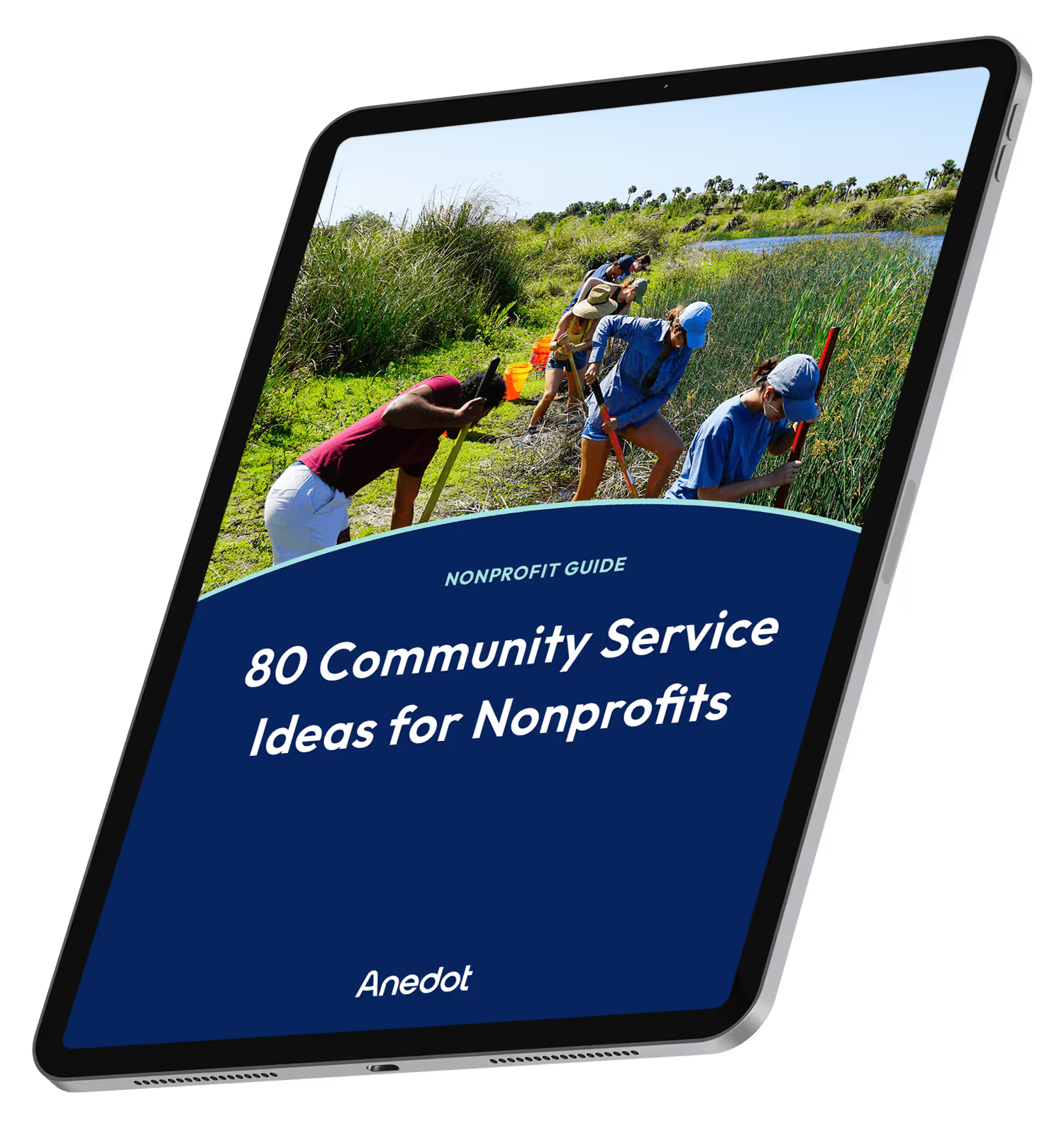
80 Community Service Ideas for Nonprofits
